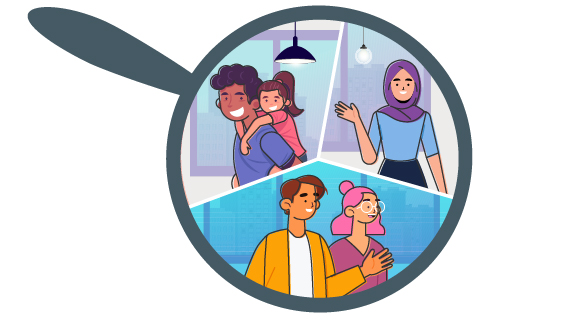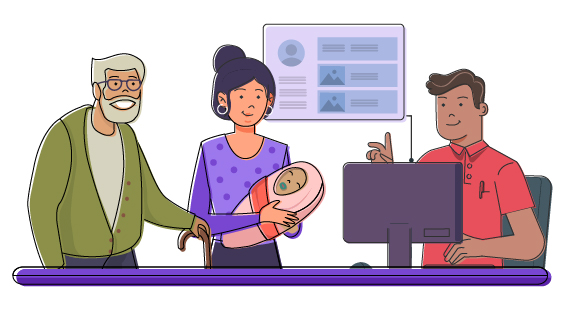Information Technology and Social Services

Founders of Tutator
décembre 1, 2020

Introduction
A reasonably uncharted territory yet…
Up until a few years ago, the use of technology in social services (that is, services designed to improve the fate of people at risk) was limited to vehicles for transportation, telephones for communication and computers for the production of thick, seldom-read reports.
We are seeing a radical shift and Information Technology is more and more seen as a key factor of success. Various institutions have gradually become aware of the relevance of using the proper tools in order to make the best use of their resources and optimize the impact they have on the people they aim at helping.
By the way, some organizations now tend to treat that Information Technology as the crown jewels and keep it all to themselves: a curious attitude for an entity whose mission is to improve the fate of people. Talk about a mission drift from “impacting people’s life” to “competing against other similar organizations”…

… But vital for the future!
In this day and age, one cannot forego the use of Information Technology. It is vital at every level of the organization. From the management of services to inventories of medicine, managing fleets of vehicles, identifying trends and needs, efficient and instantaneous communication between actors, detecting and correcting errors and abuses, providing full transparency in order to avoid corruption etc.

The topics covered in this series
I am going to cover many different topics. I do realize that some of these will be pretty obvious to some of you and I beg for your forgiveness. Indeed, it is my goal to make sure we are all on the same page so please bear with me if you already know one or the other topic covered in this series.
We need to learn from the past in order to provide better services
Back a couple of centuries ago, social services were quite different. As we moved along, we have lost some key features that were available then. We suggest using this transition toward Information Technology as a means to regain these features.
Integrating Information Technology into Social Services – Pitfalls and Recommendations
As a social institution decides to adopt Information Technology, it has to decide how to go about it. Should it hire a technology shop? Should it build its own technical team and do it itself? There are many issues with either option. We share here some thoughts on these issues and on how to best deal with them.
What new technologies can bring to your organization
Before you undergo such a transition, it is important to identify not just what you were hoping for to begin with, but also what other benefits you might gain from this transition. We attempt to present here a list of such valuable features you might want to consider as you define what you want.
Let’s talk sustainability
I am sure that the word “sustainability” is high on your list of “Must”. I would like to take a minute to go into more details on this and make sure it is not used as a mere “window dressing”. Indeed, our common goal ought to be to become unnecessary. However, all too often do we see organizations, consciously or not, working hard at justifying that they will still be needed tomorrow.
So, let’s focus on the right priorities! When done right, Information Technology can help you truly achieve sustainability, that is, the long-lasting impact of your projects / activities.
Information Technology is a service
The old days when Information Technology was seen as an investment are long gone. No longer do you spend hundreds of dollars every few years to buy the latest “MS Office” or similar. These days, these very tools are what allows these vendors to provide you with services and you are billed based on these services, not on the tool required to provide them.

Vocabulary
Let me take a minute to share with you the meaning of the terms I will be using in that series, so as to make sure that we are on the same page.
Social Institutions
What I will be sharing with you applies both to social Non-Governmental Organizations (NGO’s) and to official social institutions such as the various departments of a government: protection, education, justice, detention centers etc. I will therefore use the words “Social Institutions” to refer to both types of entities.
Participants
Yesteryear, a very paternalistic view of the social space prevailed. Social Institutions were “the providers” and the people they were bringing value to as part of their mission were “the beneficiaries”.
Fortunately, this view has passed and has given way to a more “partnership-like” approach, one where the social institution works with people in order to, together with them, solve the problems at hand.
For this reason, we refer to the people that are being helped as “participants”, that is, as active members of the improvement of their situation.
Indeed, solutions designed together with the participants have a much higher impact and a much better chance of being sustainable as these participants will have been part of the decision process. Any day, I would pick a second-best solution jointly developed with the participants over a perfect one that I came up with all by myself…
Respecting the dignity of people has at last made it to the institutions’ radar. Why shouldn’t they be part of the solution?

Gilles & Marie Concordel










